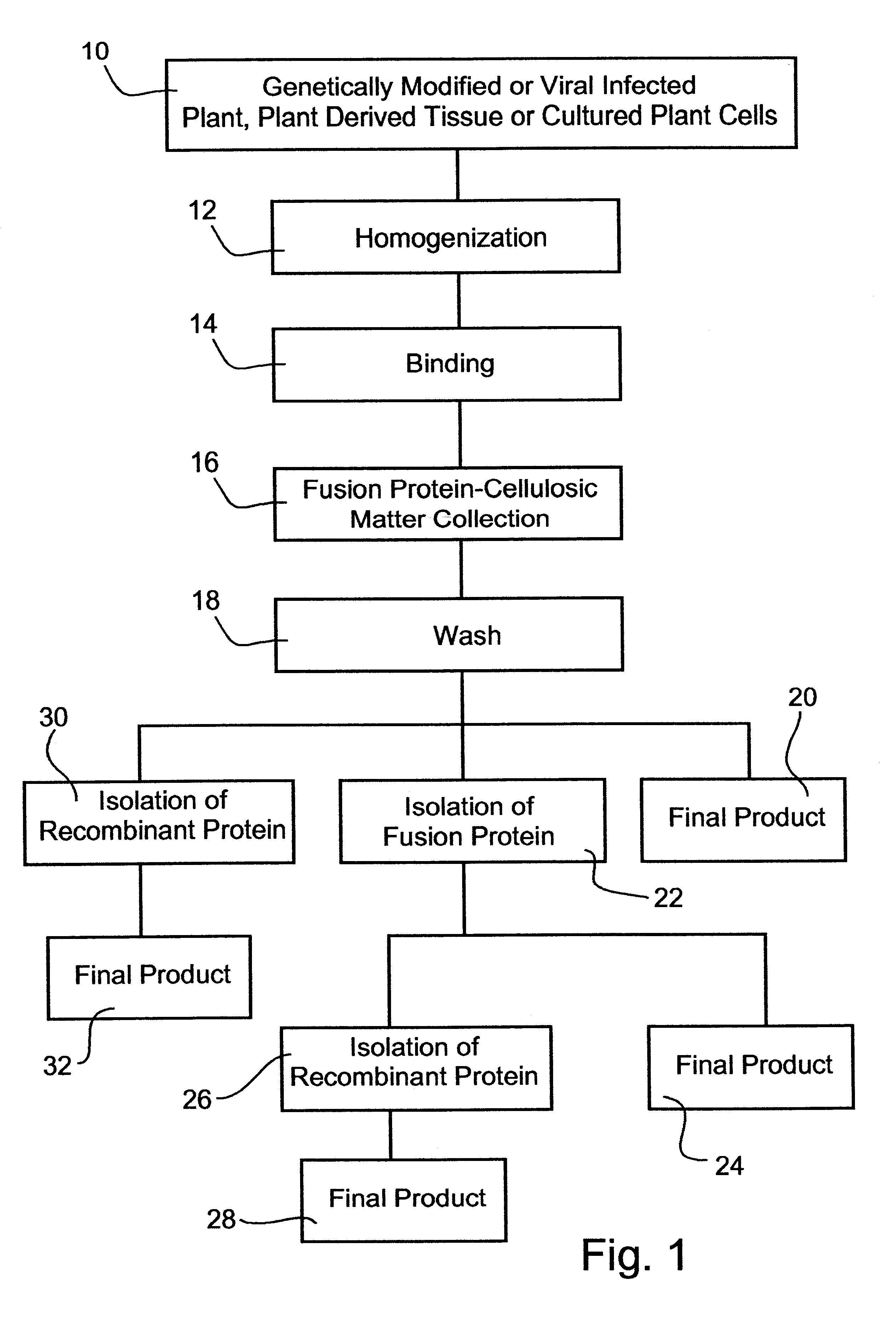Process of expressing and isolating recombinant proteins and recombinant protein products from plants, plant derived tissues or cultured plant cells
a technology of which is applied in the field of processing of expressing and isolating recombinant proteins and recombinant protein products from plants, plant derived tissues or cultured plant cells, can solve the problems of high cost of product purification, high cost of mammalian culture, and high fermentation cost of 60-80% of total production costs
- Summary
- Abstract
- Description
- Claims
- Application Information
AI Technical Summary
Problems solved by technology
Method used
Image
Examples
example 1
Expression of CBD-Protein-L in Transgenic Potato Tubers Constructs
A vector containing the class-I patatin gene B33 promoter (Olesinski et al., 1996, Plant Phisiol. 111:541-550), fused to the cell signal sequence (Shani et al., 1997, Plant Mol. Biol. 34:837-842), protein-L (hereinafter ProtL, Nilson et al., 1993, J. Immunol. Meth. 164:33-40), CBD cex sequence (Gilkes et al., 1991, Microbiol. Rev. 55:303-315) and HDEL (SEQ ID NO:1) retaining peptide sequence was constructed as follows.
A DNA fragment encoding the cell signal peptide (nucleotide 1-105 of SEQ ID NO:3) was generated by PCR using the following primers: No. 1 (BglII) 5'-AAAAAGATCTATGGCGCGAAAATCACTAA-3' (SEQ ID NO:4) and No. 2 (XbaI) 5'-AAAATCTAGATTTACGGAGAGCGTCGCG-3' (SEQ ID NO:5). A DNA fragment encoding the ProtL-CBDcex (nucleotides 3-1280 of SEQ ID NO:6) was generated by PCR using the following primers: No. 3 (XbaI) 5'-AAAATCTAGAATGGCGGCGGTAGAAAATAAAG-3' (SEQ ID NO:7); and No. 4 (HDEL, Stop and SalI) 5'-AAAAGTCGACTTAAAGT...
PUM
| Property | Measurement | Unit |
|---|---|---|
| Affinity | aaaaa | aaaaa |
Abstract
Description
Claims
Application Information
 Login to View More
Login to View More - R&D
- Intellectual Property
- Life Sciences
- Materials
- Tech Scout
- Unparalleled Data Quality
- Higher Quality Content
- 60% Fewer Hallucinations
Browse by: Latest US Patents, China's latest patents, Technical Efficacy Thesaurus, Application Domain, Technology Topic, Popular Technical Reports.
© 2025 PatSnap. All rights reserved.Legal|Privacy policy|Modern Slavery Act Transparency Statement|Sitemap|About US| Contact US: help@patsnap.com

